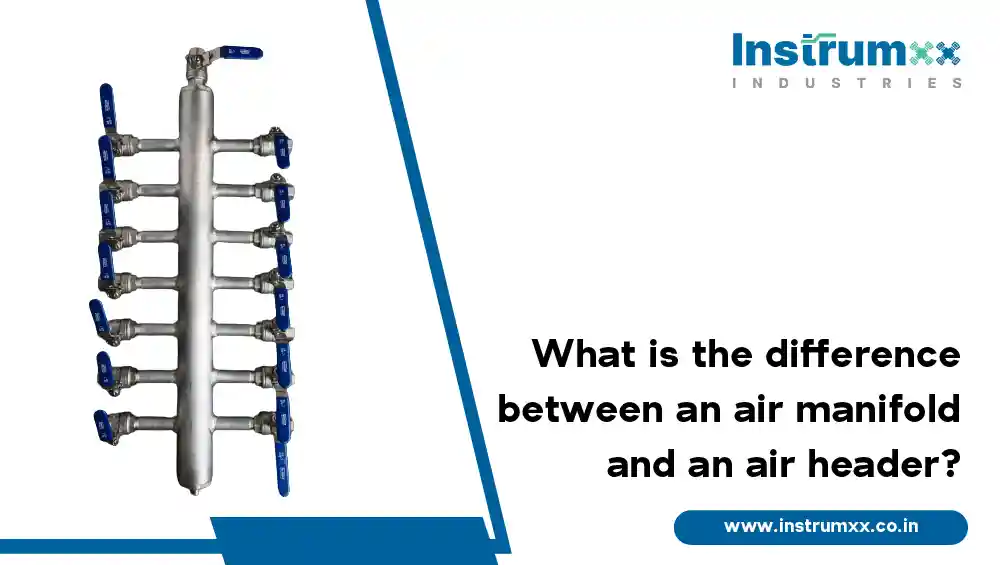In the realm of industrial processes and control systems, the proper distribution and regulation of air play a pivotal role. Two crucial components used for managing and directing compressed air are air manifolds and air headers. Despite often being used interchangeably; these devices serve distinct functions in the world of process instrumentation. In this comprehensive guide, we will delve into the differences between air manifolds and air headers, exploring their individual purposes, applications, and why they are essential in the field of industrial automation and control.
The Role of Air Manifolds
What Is an Air Manifold?
An air manifold is a device designed to distribute compressed air from a single source to multiple locations or instruments. It acts as a central hub that connects various pneumatic components, such as valves, actuators, and sensors, to a single compressed air source. The primary function of an air manifold is to streamline the distribution of compressed air, ensuring consistent and regulated air pressure to different parts of a pneumatic system.
How Does an Air Manifold Work?
Air manifolds are equipped with multiple outlets or ports, allowing them to connect to several pneumatic devices simultaneously. They are designed with precision to maintain uniform air pressure across all connected components. This ensures that each component operates optimally, avoiding pressure fluctuations that could lead to inefficient or erratic system performance.
Applications of Air Manifolds
Air manifolds find extensive use in various industries where pneumatic systems are prevalent. Common applications include automated manufacturing processes, control systems for machinery, robotics, and HVAC (Heating, Ventilation, and Air Conditioning) systems. They are particularly valuable when consistent air pressure is crucial for the performance of multiple devices.
The Significance of Air Headers
What Is an Air Header?
An air header, sometimes referred to as an instrument air header, is a complex system of interconnected pipes and valves used to distribute compressed air or other gases within a larger industrial process. Unlike an air manifold, which primarily serves to distribute air within a local area, an air header manages the distribution of compressed air across an entire facility or industrial plant.
How Does an Air Header Work?
Air headers consist of a network of pipes and control valves that route compressed air to various equipment, control devices, and instruments throughout an industrial facility. They are typically designed to ensure that each branch of the header receives the appropriate air pressure for its intended use. Air headers are also equipped with safety features, such as relief valves, to protect against overpressure conditions.
Applications of Air Headers
Air headers are fundamental in large-scale industrial processes, particularly in chemical plants, refineries, power generation facilities, and other industries where the precise control of compressed air or gases is critical. They play a vital role in supplying air to control systems, pneumatic actuators, and various instruments used for process monitoring and control.
Key Differences Between Air Manifolds and Air Headers
Now that we've explored the individual roles of air manifolds and air headers, let's highlight the key differences:
- Function:
- Air manifolds distribute compressed air from a single source to multiple local components.
- Air headers manage the distribution of compressed air or gases across an entire industrial facility or plant.
- Scope:
- Air manifolds are localized and serve a specific area or set of components.
- Air headers have a broader scope, covering an entire facility or industrial process.
- Complexity:
- Air manifolds are relatively simple devices with multiple outlets.
- Air headers are complex systems of interconnected pipes, valves, and controls.
- Application:
- Air manifolds are suitable for smaller-scale pneumatic systems.
- Air headers are essential in large-scale industrial processes that require precise control and distribution of compressed air.
In the realm of industrial automation and control, the effective distribution and regulation of compressed air are paramount. Both air manifolds and air headers play pivotal roles in ensuring that pneumatic systems operate efficiently and reliably. According to Instrumxx Industries, air manifolds are ideal for local distribution within a specific area or set of components, whereas air headers are indispensable for managing the intricate network of pipes and valves needed to supply compressed air across an entire industrial facility. Understanding the differences between these two components is essential for maintaining the integrity and efficiency of industrial processes.

 +91 9820101803
+91 9820101803
